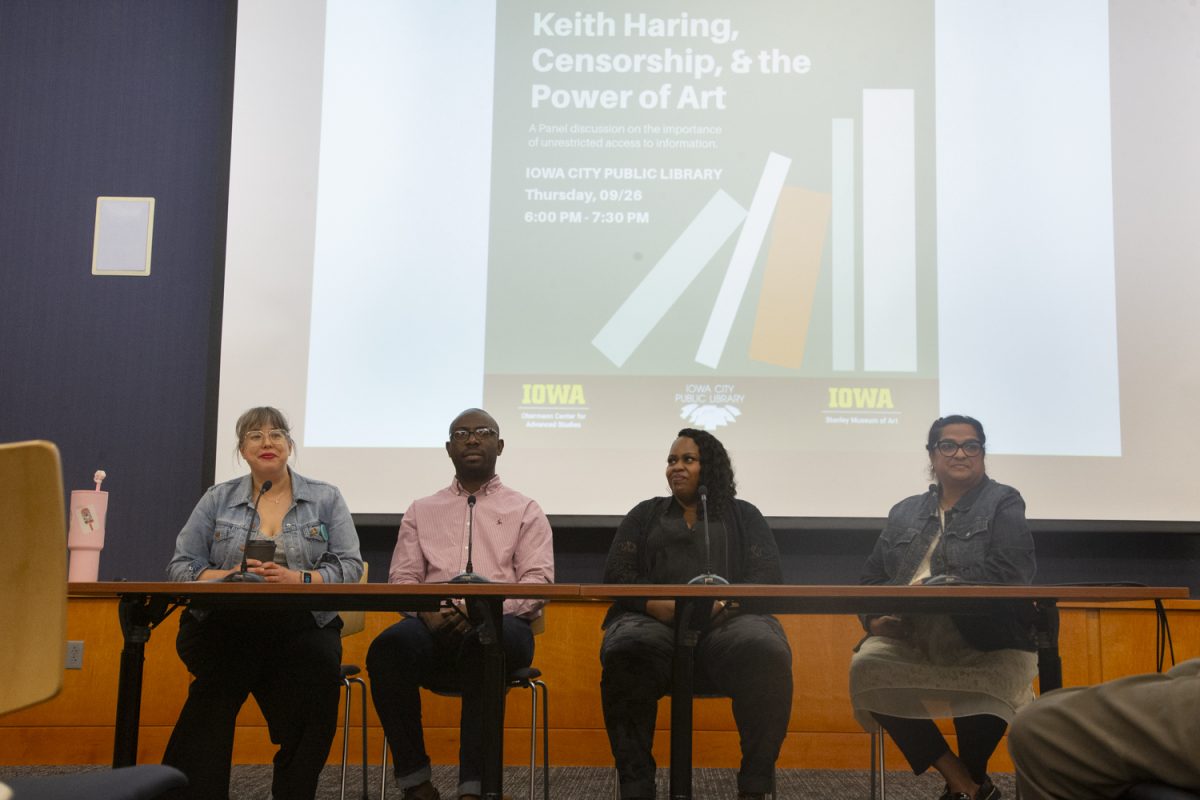School libraries and art rooms are havens of inclusivity and information for children. Teachers take pride in creating a safe space where students can explore and express themselves most authentically.
Public schools, as well as public libraries, are becoming increasingly anxious about laws expanding past school libraries to violate the principle of intellectual freedom by prohibiting students from expanding their own knowledge of a specific topic or concept.
“Public libraries are designed to offer broad, inclusive collections that invite users to find what they want and need,” Elsworth Carman, the Iowa City Public Library director, said. “The idea of limiting this offering, based on the beliefs and standards of people from outside of our service community and outside of the profession of librarianship, is a serious philosophical and logistical challenge.”
With censorship on the rise, these institutions risk losing what once made them foundational for knowledge. It’s more important now than ever—amid an era of book-banning legislation—to know what’s at stake and what intellectual freedom means for young people.
The American Library Association defines intellectual freedom as the right for people to think for themselves, and that every person has the right to access information from all points of view, in all formats, and without restriction. Censorship, defined as limiting or removing access to words, images, or ideas, directly opposes intellectual freedom.
Legislation, like Senate File 496, aims to regulate content in school libraries. Specifically, it prohibits books depicting sex acts in school libraries up to sixth grade.
The legislation, however, is vague, allowing each school district to enforce it differently. Many books being targeted by bans include LGBTQ+ stories, specifically ones about gender and sexual identity.
A large reason why Senate File 496 exists, and why so many are keen on censorship, is that children have access to adult materials and concepts.
“Many libraries, including [the Iowa City Public Library], have crafted policy around the belief that parents and adult caregivers play an important role in guiding their children’s reading choices,” Carman said. “The public library’s role is not to limit access based on perceived appropriateness, but rather to provide materials that reflect diverse perspectives and experiences.”
Not only are literary works being censored, but art is also on the chopping block. Just like books, art is necessary to express and explore difficult concepts. The Iowa City Public Library offers not only books but art as well.
“We are dedicated to maintaining a collection that allows every family to find the materials that best align with their values and interests while ensuring the community has access to the widest possible range of resources,” Carman said.
The program called “Art to Go” has become increasingly popular within the Iowa City community.
“The artist is a lens, just like the author is a lens. They might take a topic or an object and make you rethink that object. Art can bring joy, but it can also bring other types of emotions, including sadness, and melancholy,” Anne Mangano, the collection services coordinator at the Iowa City Public Library, said.
Topics relating to the LGBTQ+ community are primarily at the front of these motions of censorship in both the literary and artistic sense. A prime example of this would be the work of Keith Haring.
Haring, a gay man diagnosed with AIDS, expressed both his sexuality and his diagnosis within his colorful, demonstrative artwork. He used his art as a form of activism, creating everything from anti-apartheid artwork to AIDS awareness paintings.
Currently on exhibition at the University of Iowa Stanley Museum of Art, Haring’s 1989 print “Ignorance = Fear, Silence = Death” was created to bring awareness to the AIDS epidemic.
However inspiring Keith Haring and his artwork may be to some, others would feel better if his work were silenced. Due to the subject matter, some may feel the need to censor both the artwork and the artist to shield young minds from the uncomfortable.
“Exposure to diverse art — much like exposure to diverse literature — helps increase cultural awareness, empathy, critical thinking, and historical or political insight and help equip communities to resist censorship,” Carman said. “Art can be very powerful, serving as a means to express controversial ideas, resist or protest repressive environments, document history, raise public awareness, and establish an emotional connection.”
The Iowa City Public Library’s panel on Haring’s work on display at the Stanley Museum discussed the value of topics like sexuality and identity being readily available in both art and literature.
The full program is available online, furthering the library’s goal of promoting freedom of access to information.



